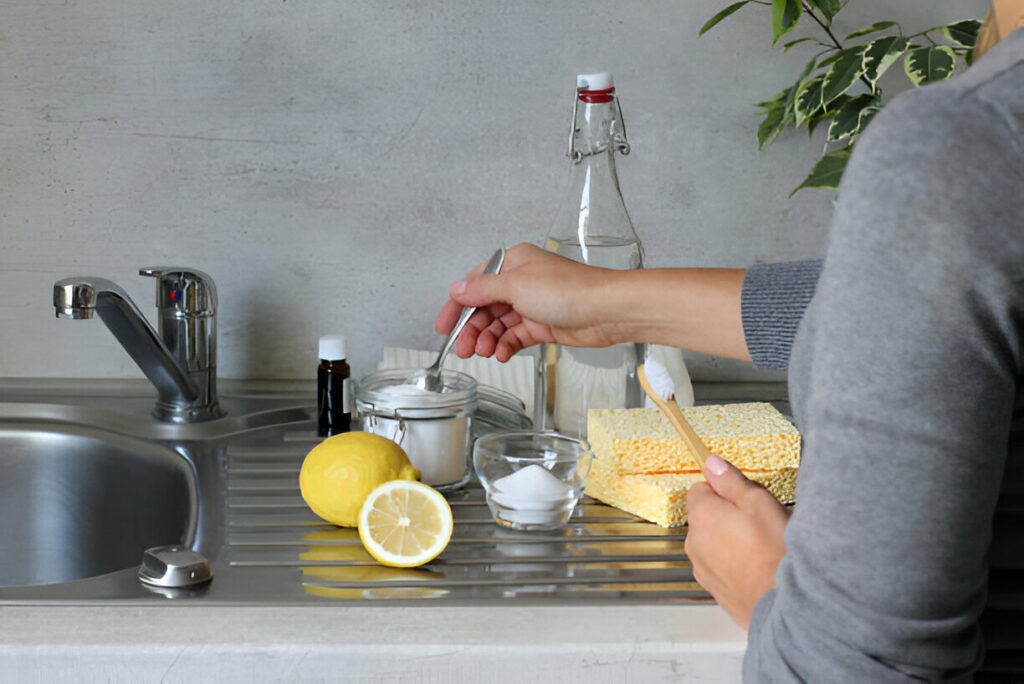In today’s world, where environmental consciousness is at an all-time high, making sustainable choices in our daily lives has become increasingly important. One area where we can make a significant impact is through the cleaning products we use in our homes. Conventional cleaning products often contain harmful chemicals that can be detrimental to both human health and the environment. In this guide, we will explore what makes a cleaning product eco-friendly and provide you with actionable advice on how to choose the best options for a cleaner, greener home.
Understanding Eco-Friendly Cleaning Products
Eco-friendly cleaning products are designed to effectively clean your home without harming the environment or exposing you and your family to potentially hazardous chemicals. These products typically use natural, biodegradable ingredients that are safer for both users and the planet. By choosing eco-friendly cleaning products, you can help reduce pollution, conserve resources, and promote a healthier living environment.
Key Factors to Consider When Choosing Eco-Friendly Cleaning Products
- Certifications:
- Look for products that carry certifications from reputable organizations such as EcoLogo, Green Seal, or Cradle to Cradle. These certifications ensure that the products meet specific environmental standards, such as being free from harmful chemicals and using sustainable manufacturing processes.
- Ingredient Transparency:
- Read the ingredient labels carefully. Reputable eco-friendly brands will list all their ingredients clearly. Avoid products that hide potentially harmful chemicals behind vague terms like “fragrance” or “cleaning agents.”
- Avoid Harmful Chemicals:
- Stay away from products containing phosphates, ammonia, chlorine, and artificial fragrances. These chemicals can be harmful to both human health and the environment, contributing to water pollution and respiratory issues.
- Natural Ingredients:
- Opt for products that use natural, biodegradable ingredients such as plant-based surfactants, essential oils, vinegar, and baking soda. These ingredients not only clean effectively but also have minimal environmental impact.
- Packaging:
- Choose products with minimal, recyclable, or compostable packaging to reduce waste. Some brands offer refill options or bulk purchases, which can be more sustainable and often more cost-effective.
- Performance:
- Ensure that the eco-friendly cleaning products you choose are effective in cleaning. Many natural ingredients can tackle tough messes just as well as their chemical counterparts. Look for products with positive reviews and test them yourself to find what works best for your needs.
- Price and Value:
- While eco-friendly products may sometimes cost more upfront, they often last longer or are more concentrated, making them more economical in the long run. Additionally, the health and environmental benefits can outweigh the initial higher cost.
Benefits of Using Eco-Friendly Cleaning Products
- Healthier Home Environment: By avoiding harsh chemicals, you create a safer space for you and your family, reducing the risk of allergies, asthma, and other health issues.
- Environmental Stewardship: Eco-friendly products help reduce pollution and conserve natural resources, contributing to a healthier planet.
- Support for Sustainable Brands: Choosing products from companies committed to sustainability encourages more environmentally responsible practices in the industry.
How to Read and Interpret Labels
- Signal Words: Look for labels that indicate the product is “non-toxic,” “biodegradable,” and “free of harsh chemicals.”
- Eco-Certifications: As mentioned earlier, certifications like EcoLogo and Green Seal are trustworthy indicators of a product’s environmental credentials.
- Ingredient Lists: Prefer products that list all ingredients transparently. Avoid those with opaque terms that may hide harmful chemicals.
Top Eco-Friendly Cleaning Brands and Product Recommendations
- All-Purpose Cleaners:
- Seventh Generation Disinfecting Multi-Surface Cleaner: Effective against germs and viruses, made with thyme oil and other natural ingredients.
- Ecover All-Purpose Cleaner: Plant-based and biodegradable, perfect for everyday cleaning tasks.
- Dish Soap:
- Dr. Bronner’s Sal Suds: A versatile, biodegradable soap made from organic and certified fair trade ingredients.
- Method Squirt & Mop Dish Soap: Available in concentrated forms to reduce plastic waste and water usage.
- Laundry Detergent:
- Knutsford Soap Co. Eco Egg: A reusable washing ball that lasts up to 500 washes, reducing plastic waste.
- The Laundress Quick Wash: Plant-based and free from synthetic fragrances and dyes.
- Bathroom Cleaners:
- Mrs. Meyer’s Clean Day Multi-Surface Cleaner: Delightful scents from essential oils and plant-derived ingredients.
- Better Life Natural Bathroom Cleaner: Safe for use around children and pets, effectively removes soap scum and grime.
Making Your Own Eco-Friendly Cleaners
Creating your own cleaning solutions using household ingredients is not only cost-effective but also ensures you know exactly what goes into cleaning your home. Here are a few simple recipes:
- All-Purpose Cleaner:
- Mix equal parts water and white vinegar in a spray bottle.
- Add a few drops of essential oil for fragrance (optional).
- Glass Cleaner:
- Combine 1 part rubbing alcohol, 1 part water, and a splash of white vinegar in a spray bottle.
- Shake well before use.
- Bathroom Cleaner:
- Mix baking soda with a small amount of water to form a paste.
- Apply to tiles and sinks, scrub, and rinse clean.
Disposing of Cleaning Products Responsibly
Proper disposal of cleaning products is crucial to prevent environmental contamination. Here’s how to do it:
- Empty Containers: Rinse containers thoroughly before recycling them.
- Unused Products: Check with your local waste management facility for proper disposal methods. Some areas have hazardous waste collection days.
- Expired Products: Do not pour expired cleaners down the drain; instead, follow local guidelines for disposal.
Conclusion
Choosing eco-friendly cleaning products is a simple yet powerful way to contribute to a healthier home and a healthier planet. By understanding what makes a product eco-friendly and making informed choices, you can make a positive difference. Start by looking for certifications, reading labels carefully, and opting for products with natural ingredients and sustainable packaging. Remember, every small change counts, and together, we can create a cleaner, greener future.


